Damped oscillations are induced in a cirucuit whose quality factor is and natural oscillation frequency is . How soon will the energy stored in the circuit decrease times ?
or or
Now
Thus energy decreases times in sec.
Topper's Solved these Questions
- OSCILLATIONS AND WAVESBook:IE IRODOV, LA SENA & SS KROTOVChapter:OSCILLATIONS AND WAVESExercise:Elastic Waves
Explore 39 Videos
- OSCILLATIONS AND WAVESBook:IE IRODOV, LA SENA & SS KROTOVChapter:OSCILLATIONS AND WAVESExercise:Electromagnetic Waves, Radiation
Explore 36 Videos
- OSCILLATIONS AND WAVESBook:IE IRODOV, LA SENA & SS KROTOVChapter:OSCILLATIONS AND WAVESExercise:Electromagnetic Waves, Radiation
Explore 36 Videos
- OPTICSBook:IE IRODOV, LA SENA & SS KROTOVChapter:OPTICSExercise:Exercise
Explore 2 Videos
- PHYSICAL FUNDAMENTALS OF MECHANICSBook:IE IRODOV, LA SENA & SS KROTOVChapter:PHYSICAL FUNDAMENTALS OF MECHANICSExercise:Relativistic Mechanics
Explore 49 Videos
Similar Questions
How much ( in per cen ) does the free oscllation frequency ω of a circuit with quality factor Q=5.0 differ from the natural oscillation frequency ω0 of that circuit ?
View SolutionHow soon does the current amplitude in an oscillating circuit with quality factor Q=5000 decrease η=2.0 times if the oscillation frequency is v=2.2MHz?
View Solution
Knowledge Check
An LCR circuit is equivalent to a damped pendulum In an LCR circuit the capacitor is charged to Q0 and then connected to the L and R as shown below : Thus potential energy stored in the capacitor and that in the inductor also oscillates between maximum value an zero with double the frequency.
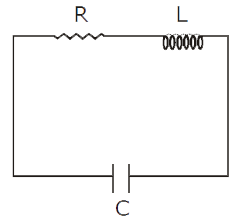
If a student plots graphs of the square of maximum charge (Q2max) on the capacitor with time (t) for two different values L1andL2(L1>L2) of L then which of the following reprersent this graph correctly ? (Plots are shematic and not drawn to scale )A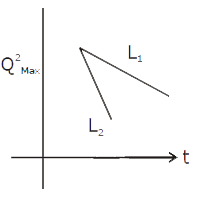 B
B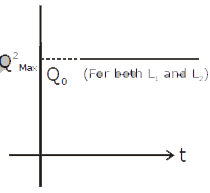 C
C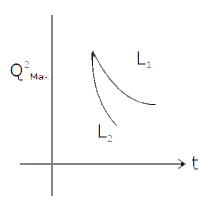 D
D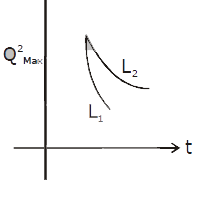
In LR circuit, f = 50 Hz, L= 2 H, ε=5V,R=1Ω, then the energy stored in the inductor is:
A25 JB50 JC100 JDNone of these
A source of sinusoidal emf with constant voltage is connected in series with an oscillating circuit with quality factor Q=100. At a certain frequency of the external voltage the heat power generated in the circuit reached the maximum value. How much ( in per cent) should this frequency be shifted to decrease the power generated n=2.0 times ?
View SolutionFind the quality factor of a mathematic pendulum l=50cm long if during the time interval τ=5.2 min its total mechanical energy decreases η=4.0.104 times.
View SolutionA circuit consisting of a capacitor and a coil connected in seried if fed two alternating voltages of equal amplitudes but different frequencies. The frequency of one voltage is equal to the natural oscillation frequency (ω0) of the circuit, the frequency of the other voltage is η times highter. Find the ratio of the current amplitudes (I0/I) generated by the two voltages if the quality factor of the system is equal to Q. Calculate this ratio for Q=10 and 100, if η=1.10.
View SolutionIn the circuit shows in Fig the capacitor is initially uncharged and the two - way switch is connected in the position BC. Find the current through the resistence R as a function of time t. After time t=4 ms, the switch is connected in the position AC. Find the frequency of oscillation of the capacitor of the circuit in the position, and the maximum charge on the capacitor C. At what time will the energy stored in the capacitor be one-half of the total energy stored in the circuit? It is given L=2×10−4H,C=5mF,R=In210Ω and emf of the battery =1V.
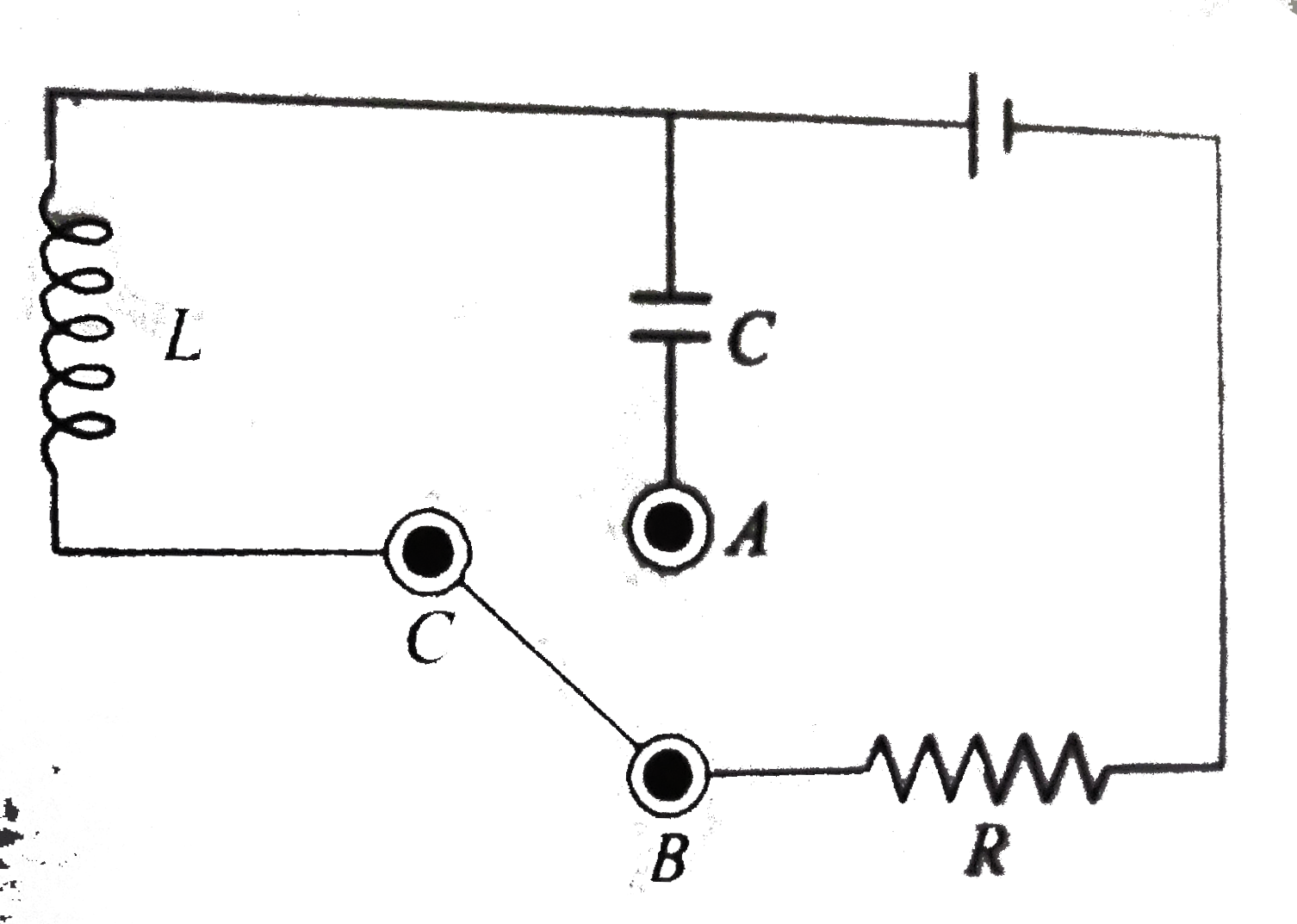
View SolutionDemonstrate thatat low damping the quality factor Q of a circuit maintaining forced oscillations is approximately equal to ω0/Δω, where ω0 is the natural oscillation frequency , Δω is the width of the resonance curve I(ω) at the " height " which is √2 times less than the resonance current amplitude.
View SolutionAn external harmonic force F whose frequency can be varied, with amplitude maintained constant, acts in a vertical direction on a ball suspended by a weightless spring. The damping coefficient is η times less than the natural oscillation frequency ω0 of the ball. How much, in per cent, does the mean power (:P:) developed differ from the maximum mean power (:P:)max? Averaging is performed over one oscillation period.
View Solution
